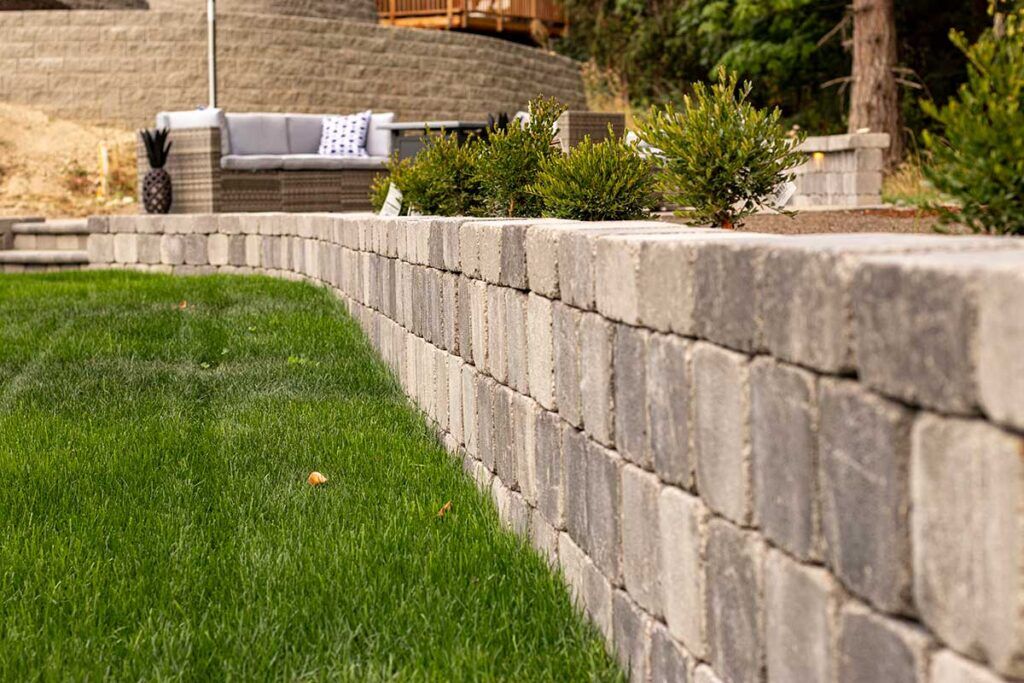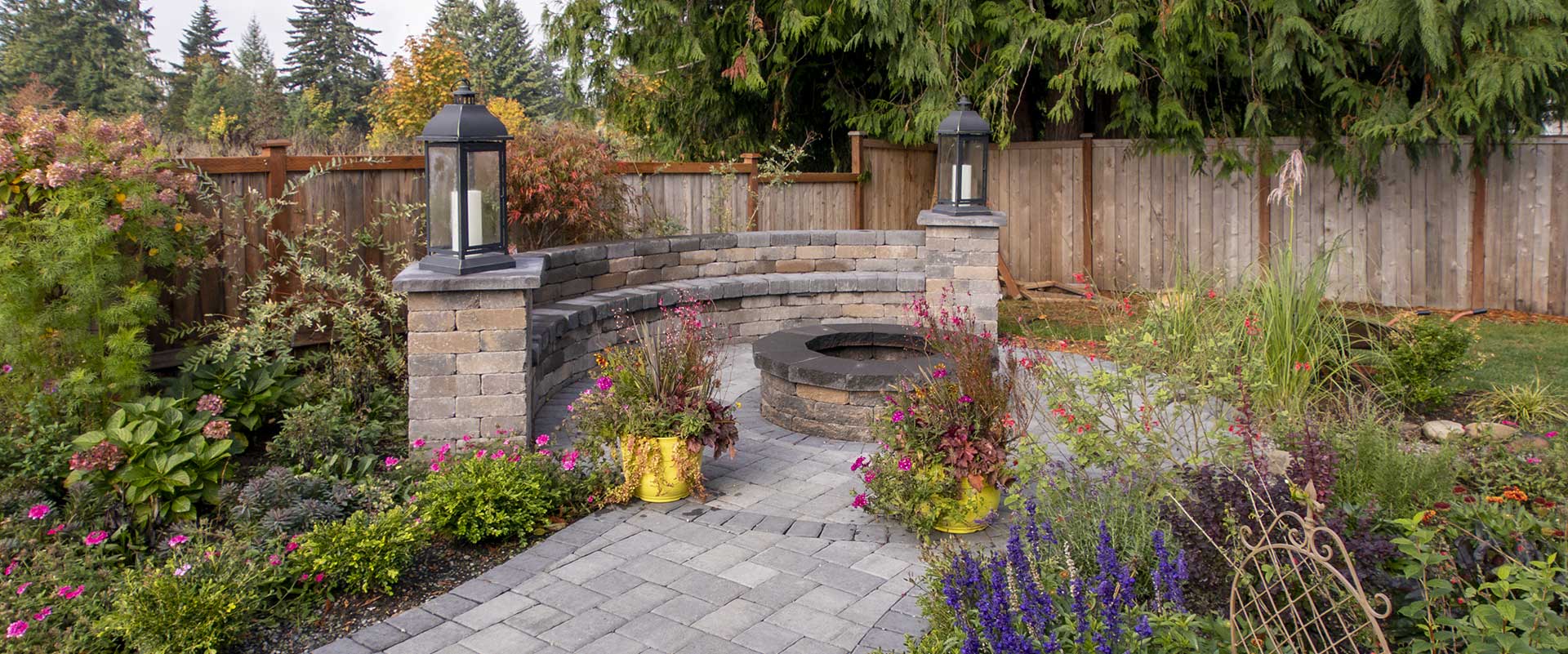Different types of retaining walls for landscaping are everywhere. Yet, you might not realize their significance. Though the types and uses of retaining walls can vary from property to property, the strategic placement and construction of these structures are integral to landscaping.
A retaining or retention wall could be a need or a want for your property. In some cases, it could be both. Learn more about these structures and get retaining wall ideas for your yard below.
What Is a Retaining Wall?
A retaining wall is a human-made structure that minimizes or stops soil erosion on a slope. It retains soil, water, sand, and other natural materials from shifting downward. As such, soils can be at two elevations simultaneously, giving the landscape shape and dimension.

Different Types of Retaining Walls
Cantilever Retaining Wall
One of the top cheap retaining wall ideas is to install a cantilever structure. This type of wall relies on less material than many other types of retaining walls while offering great reinforcement. Still, it’s lightweight and has many of the same benefits as a gravity retaining wall.
Gravity Retaining Wall
A gravity retaining wall is a massive structure that uses its weight and gravity load to counter soil pressure. Despite its high weight, a gravity wall’s width should be half the thickness of its height.
Masonry, concrete, and natural stone are common materials for this type of retention wall. It’s easy to install and incredibly strong, with enough plasticity to install along a curve.
Anchored Retaining Wall
Anchored retaining walls are complex structures. They get extra reinforcement from connections to anchors or cables that adhere to other surfaces. Anchored walls are budget-friendly, have good resistance despite their thinner construction, and are most suitable for courtyards featuring a hillock or small mound.
Crib Retaining Wall
As a type of gravity wall, a crib retaining wall uses a series of interlocking boxes or modules consisting of pre-cast concrete or timber. Inside each box is a coarse granular material for drainage. Though crib retaining walls aren’t ideal for slopes, they’re perfect for supporting garden planters.
Gabion Retaining Wall
For optimal erosion control with great wind and water flow reduction, a gabion wall is an excellent choice. These structures are essentially wire mesh cages in the form of a wall that you can fill with inorganic materials like pieces of concrete, brick, or stone.
Gabion retaining walls are popular due to the contrast between the sleek wires and rustic interior material. They also get stronger with age since the fill material settles over time.
Piled Retaining Wall
A pile retaining wall uses a line of reinforced concrete piles that installers drive into the ground. The depth at which someone installs them will give the piles enough strength to counter the horizontal and vertical force of the elevated soil.
You can install a pile retaining wall as a temporary or permanent fixture. They’re ideal for areas with sudden elevation changes.
Buttressed Retaining Wall
A buttressed retaining wall is a strengthened cantilever wall with added right-angled supports. It’s similar to a counterfort retaining wall that has hidden supports under the elevated soil. However, a buttressed retaining wall has visible supports that give it extra strength and stabilization to bear the weight of a massive backfill load.
How Do Retaining Walls Work and Their Advantages
Different types of retaining wall designs feature their own installation methods and materials to ensure efficient soil and moisture retention. Still, the general structural elements are similar.
The retention wall will have a sand, stone aggregate, or compact soil base. The base’s depth under the ground depends on the retaining wall’s height and the weight it’ll bear.
The face of the wall is the visible part of the wall that usually has a decorative element like a pattern or stone texture. Behind the face, which connects to the base, is the elevated portion of the soil or backfill. The backfill will also have about a foot of stone aggregates directly behind the wall for drainage.
The retaining wall will have a thick base or stem if it is relatively high. The stem provides additional stability against the horizontal pressure from the soil behind the wall’s face.
With a proper retaining wall installation, you could experience these benefits:
- Runoff Management: Retaining walls can influence how water flows off the soil, which can help prevent yard flooding and property damage.
- Soil Erosion Prevention: Heavy rain could erode the soil if your property is part of a hilly area. A retention wall can prevent this.
- Structural Support for Buildings: By stopping soil erosion, retaining walls can keep soil around your home or business’s foundation sturdy and compact. Your property’s foundation will be more stable.
- Visual Appeal: The types of retaining walls available all have design elements that can make a landscape look more appealing. You can also boost your property’s curb appeal by adding flower beds or high-grade materials to your retaining walls.
Considerations for Retaining Wall Construction
Before constructing a retaining wall, you should consider these factors to ensure proper placement, effectiveness, and landscape aesthetics:
- Retaining Wall Materials: The materials you select will depend on the type of retaining wall you want. The sturdiest, most common materials are poured concrete, flagstone, brick veneer, and treated timber.
- Retaining Wall Location: A retaining wall can increase your property’s usable land by creating platforms. However, you must consider the location of property lines, underground utilities, and natural drainage patterns to ensure proper placement.
- Retaining Wall Design: A professional engineer or retaining wall installer could help you create the perfect design for the type of retaining wall you prefer. They’ll use their expertise to calculate ideal wall heights, placement, and setback angles to produce the best results.
Conclusion
No matter which types of retaining walls you like for your property in the Pacific Northwest, count on Sta-Built Construction for a flawless installation. Our fully licensed and insured company and experienced crew deliver excellent workmanship on all projects and guarantee satisfaction with a 15-year workmanship warranty. Call (360) 284-2573 today to request a free estimate for landscape retaining walls.
